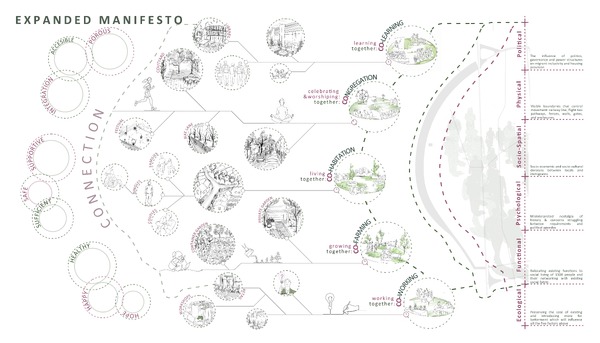Templhofer Feld : Fostering CO-Living
As an aspiring architect and urban designer, I strive to navigate our cities 'complexity and contradiction', drawing from a 'conscious sense of the past' to contribute to a more sustainable future. I aim for my designs to thoughtfully consider precedent rather than merely following habit, hoping to create spaces that attract, solve, and comfort—responding to the local context while addressing broader challenges. Through this approach, I hope to participate in crafting a 'social art' that resonates with both people and place, contributing to the vital connective tissue of our urban fabric."
The master's in architecture and urbanism has deepened my understanding of urban design principles, taking my knowledge into a more profound realm of sustainability. The work here is an overview of a compilation of work produced during the program. The project focuses on the subject of "edge," and the meaning goes deeper throughout the semesters; from exploring the edges of the tempelhofer feld to the edge of selected urban development sites to the edge between indoor and outdoor built spaces, we zoomed in from urban level to architecture. The manifesto was to activate the south edge of Tempelhofer feld by introducing a porous, self-sufficient, and well-connected community there. The community living project I have worked on exemplifies my integrated approach to cooperative design.
The project aims to create economically viable communities, foster social cohesion, and reduce ecological footprints through thoughtful design and material choices. The projects incorporated mixed-use spaces like offices, workshops, retail areas, and educational facilities to foster economic viability. Social sustainability is achieved through thoughtfully designed communal spaces encouraging neighbourhood interaction and participation. Environmental sustainability involves selecting eco-friendly materials and innovative technologies that benefit the community and the environment.


